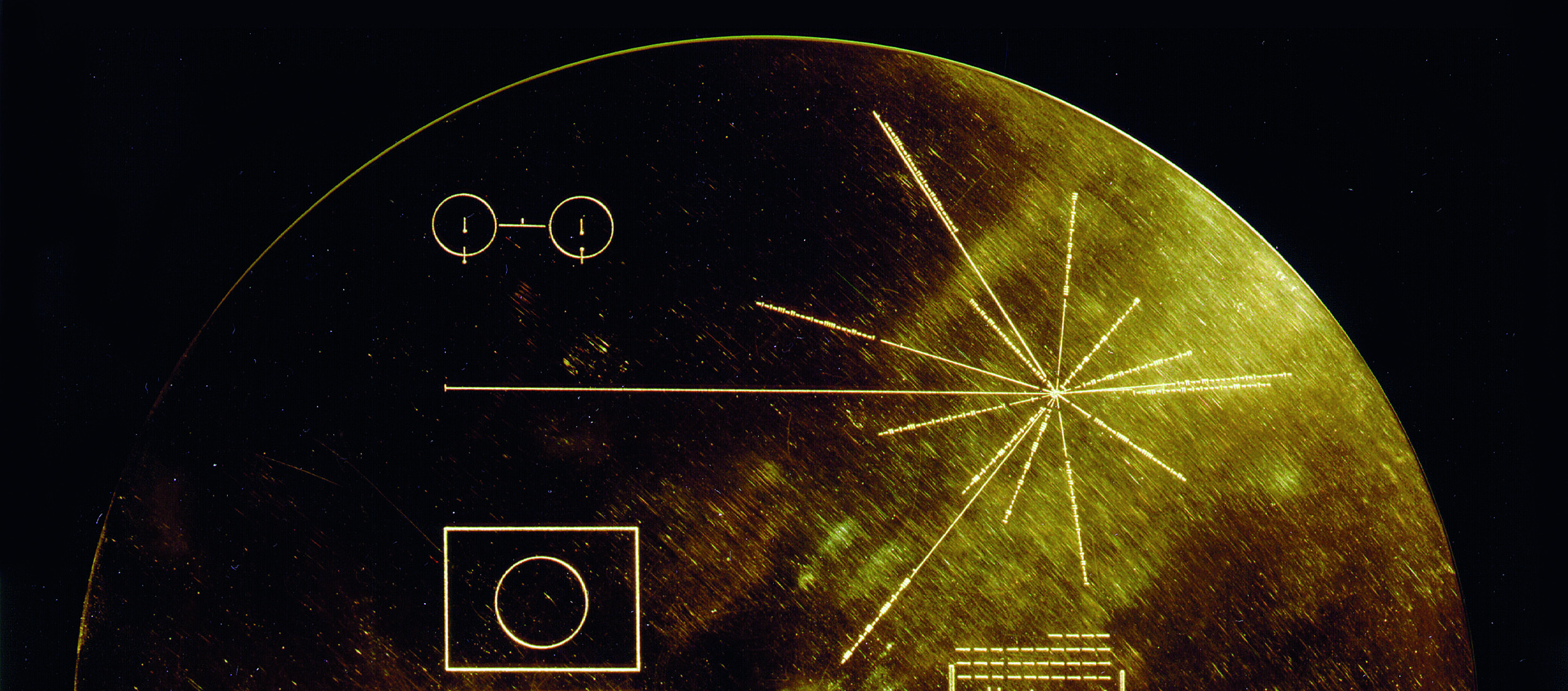Elon Musk wasn't the first person to launch music into outer space – find out about NASA's interstellar Golden Record.
Design Matters: Icons
The Golden Record
What runs on 40 KB memory, is 13 billion miles from Earth and counting, and contains one of the most ambitious albums ever? Elon Musk wasn't the first person to launch music into outer space – find out about NASA's Voyager space probes' Golden Record.
By NatE Budzinski
Distant originals
“The more time we spend in virtual mediated experiences, the greater the desire is for beautiful, tangible artefacts, the physicality of the original that’s now 13 billion miles from Earth.” So the tech writer and futurologist David Pescovitz told me in an interview earlier this year.
The distant “original” that David’s talking about is the Voyager deep space probe. Launched by NASA back in 1977 to explore our solar system and beyond, at the time Voyager represented the pinnacle of technological advancement, as well as some of our most ambitious hopes and dreams.
Specifically, though, David is interested in the “beautiful, tangible” object of desire that Voyager carries: the so-called Golden Record, containing The Sounds Of Earth compilation.
Greetings from Earth
““... the Golden Record was the ultimate global mix for an intergalactic listenership – but it was a release with only two copies.””
Ultimate Global Mix
Included on both Voyager space probes, The Golden Record is a collection of sounds and music which tried to sum up life on Earth for any alien civilisations the probes might meet on their journeys. From the sounds of a mother soothing her newborn, bus engines revving and people laughing, to the music of J.S. Bach, Chuck Berry and Azerbaijani bagpipes, the Golden record tried to compress the world in sound onto an LP. Compiled by a panel of experts and academics, it was the ultimate global mix for an intergalactic listenership – but it was a release with only two copies. That is until now. Pescovitz and colleagues are set to produce a wider amount of terrestrial copies, available for us Earth-bound inhabitants to purchase.
Vintage Tech Specs
The hopes of this small record reach far. In the 40 years since Voyager 1 departed our pale blue dot, there’s been a lot of changes at home. One of the most profound has been the so-called information revolution. In its infancy in the late 70s, the internet and connected mobile tech have since taken over the world. It’s an oft-repeated example, but then-current cutting edge technology like Voyager ran on nothing near the computing power of today’s standard phone: Voyager runs on 40 KB of memory, current phones generally have 3–4 GB, not counting storage.
Press play: A gold aluminium cover designed to protect the Sounds of Earth's gold-plated records from micrometeorite bombardment during its epic, interstellar journey, also featured playing instructions to any alien who found the record. Photo courtesy NASA.






